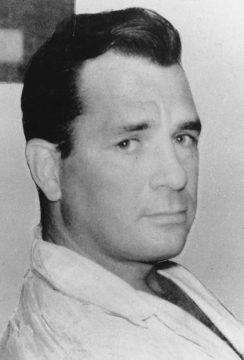Ronald Collins in The Washington Post:
 In early September 1957, Jack Kerouac achieved the dream of every writer. Around midnight he and his girlfriend, Joyce Glassman, left her brownstone apartment in New York City for a nearby newsstand at Broadway and 66th Street. They waited while the nightman cut the twine around the morning edition of the New York Times. Rifling through the paper, they found on Page 27 an expected review of Kerouac’s new book, “On the Road.”
In early September 1957, Jack Kerouac achieved the dream of every writer. Around midnight he and his girlfriend, Joyce Glassman, left her brownstone apartment in New York City for a nearby newsstand at Broadway and 66th Street. They waited while the nightman cut the twine around the morning edition of the New York Times. Rifling through the paper, they found on Page 27 an expected review of Kerouac’s new book, “On the Road.”
Glassman recalled that she “felt dizzy reading the first paragraph.”
Kerouac was reading along, too. “It’s good, isn’t it?” he asked.
“Yes, it’s very, very good,” Glassman recounted in her 1983 memoir.
That breakthrough review, written by Gilbert Millstein in the “Books of the Times” column, changed the course of literary history and the career of Kerouac, who died 50 years ago this fall, on Oct. 21, 1969. If not for that review, Kerouac might have remained a minor writer and the Beat Generation so fully associated with his name may never have flourished as it did. After all, seven years earlier, Kerouac had published his first book, “The Town and the City,” to modest reviews, which were not enough to propel him to fame.
With the first line of his critique of “On the Road,” Millstein announced a work of transcendent proportions. “Its publication is a historic occasion,” he proclaimed. In the piece, he probed the depths of Kerouac the writer and explored the breadth of “On the Road.” Millstein billed the pseudo-philosophic road novel as an “authentic work of art.” After examining the sociological and psychological dimensions of the book, he rhapsodized over its style, declaring, “The writing is of a beauty almost breathtaking.” And he quoted what would become the canonical lines from the novel: “The only people for me are the mad ones, the ones who are mad to live, mad to talk, mad to be saved, desirous of everything at the same time, the ones who never yawn or say a commonplace thing, but burn, burn, burn like fabulous yellow roman candles.”
More here.
